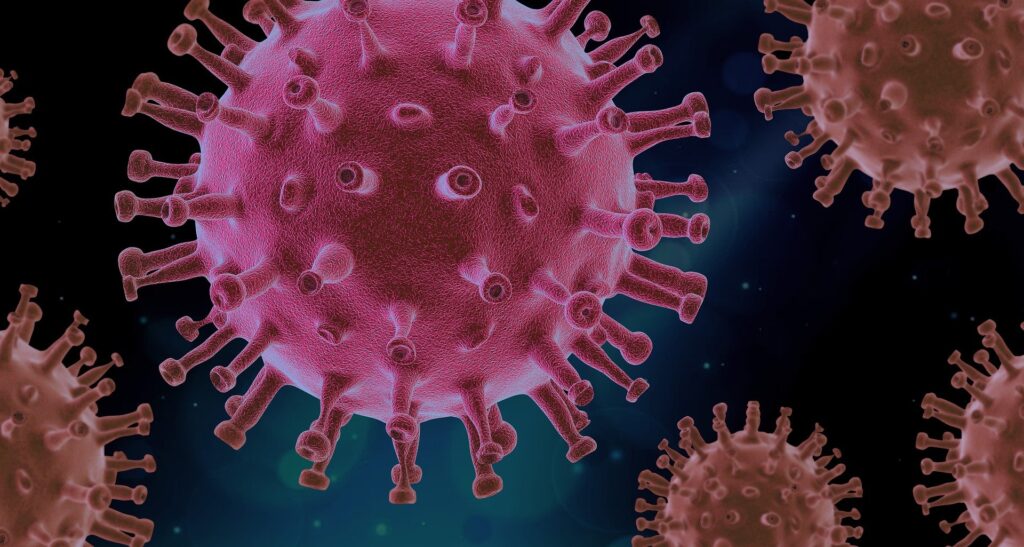By David Barclay | February 22, 2023

Cruising earned a black eye during the pandemic from a few super spreader events that made national headlines. While weddings, conferences and other large gatherings also made headlines as super spreader events, the cruise ships that made national headlines stuck in the collective public consciousness for a long time. Cruising took the brunt of the COVID public punishment, in my mind, for 3 key reasons. One, cruise lines were not prepared to stop an unknown pathogen traveling by unknown means. They didn’t have the means to test, quickly identify, and isolate infected passengers. Two, due to the nature of cruising, ships showing signs of infection couldn’t immediately disembark their passengers to create social distancing. And three, a few cruise ships were banned from docking after infections were detected, forcing a bad super spreader event to continue for many days and weeks.
The cruise lines have worked hard to adapt based on their learnings from COVID-19. Here is a list of 5 reasons cruising is now safer and more enjoyable than before the pandemic.
Vaccination & Testing
While cruise lines have adapted to changing country regulations and have relaxed vaccination and testing requirements, they are still vigilantly looking for possible future outbreaks of COVID. Vaccination and pre-testing requirements are changing regularly, driven by the requirements of ports on the itineraries. While many cruise lines no longer require guest be vaccinated, some still require unvaccinated travelers to present negative tests prior to embarkation. Cruise lines have also implemented pre-embarkation health screenings including a enhanced health questionnaires. Guests who are suspected of infection are tested prior to embarkation. Once the cruise has begun, cruise lines maintain the right to test passengers who show any symptoms of infection. Guests found to be infected are quarantined until no longer contagious. Many ships reserve an allotment of staterooms isolated from other guest areas to serve as the quarantine area for infected passengers.
Refunds for COVID infection
For some, a multi-week or luxury cruise may be a big investment and cruise lines realize many guests forgo travel insurance that would otherwise protected their investment in the case of an infection leading up to the cruise embarkation date. To avoid the temptation of avoiding testing or even trying to get through the pre-embarkation health screenings so they don’t miss out on their cruise and lose their investment, most cruise lines have implemented generous COVID related refund policies. For example, Silversea will provide a full refund or a future cruise credit for any passenger who tests positive for COVID within 10 days of embarkation. For exposure or confirmed close contact cases, Silversea will evaluate each situation and if they cancel the cruise for the guest, Silversea will also provide a full refund. This provides strong incentive for guests to postpone their trip after a suspected infection, allowing guests to recover before taking their cruise (best for the infected guest) and not exposing other guests to potential infection (best for all guests on board).
Enhanced Sanitation Measurers
COVID highlighted a major issue on cruise ships, which was a lack of stringent sanitation. Since the pandemic, cruise lines have dramatically altered their sanitation protocols. Cruise lines now provide continual disinfection of public areas and high-traffic touch points using EPA-approved disinfectants. Between sailings staterooms receive enhanced cleanings and some of the luxury lines provide intensive non-toxic microbial disinfection daily during each cruise. Ships have also installed medical-grade air filters both in public areas and in staterooms, to continuously filter the air of airborne pathogens including SARS-CoV-2.
Changing How Meals are Served
Meal service on cruise lines has been evolving for many decades. Many lines have eliminated traditional assigned seating times for dinners, providing guests more flexibility in when and where they eat. The pandemic accelerated the trend of moving away from self-serve buffets for breakfast & lunch (and some dinners). While many cruise lines haven’t completely removed the buffet, what did change is how the buffet meal is served. Gone are the days of passengers serving themselves. Where the buffet station remains, guests are served by crewmembers. This reduces the chance of cross infection of guests from contact with shared serving pieces, and reduces the change of food contamination which could cause a foodborne illness. Many lines have also increased the use of wrapped “grab and go” items to reduce cross-contamination.
Evolution of the Muster Drill
For those who are experienced cruisers, the muster drill is the part of the cruise they look forward to the least. For those not familiar with the muster drill, it’s the ship equivalent of the safety briefing received on an airplane before takeoff. The big difference, all guests must attend the muster drill and guests must pay attention for the duration of the drill. For guests that don’t participate, the cruise line can (and will) remove them from the ship before it leaves port. This is done for safety purposes, guest safety in an emergency is largely driven by their ability to follow the emergency protocols taught during the muster drill. Experienced cruisers dread the muster drill because it always occurs at the worst time (about an hour before the ship departs, when cruisers want to start enjoying their cruise, not participating in a safety briefing), requires everyone to wear their issued flotation devices, and packs guests into a confined space on an outside deck for the duration of the roughly 30-minute drill. Pre-pandemic a few lines experimented with alternate locations for the muster drill, allowing guests to meet in smaller groups in inside locations with seating (e.g. the theater). Post pandemic, to increase social distancing, cruise lines have started introducing e-muster drills. Guests can watch the safety briefings on their mobile devices anytime after boarding, allowing them to get this out of the way soon after boarding and in the comfort of their stateroom. The e-muster is completed by checking in at a physical muster station to certify completing of the safety briefing (and maybe after a few quick questions to confirm the briefing was fully reviewed).

David Barclay
Owner, Barclay & Company Travel
Thanks for visiting the Barclay & Company Travel blog! If you’re new here, check out Our Story, learn about the Value we provide, or Contact Us to start planning your next adventure.
Check back often for new posts and if you haven’t already, please subscribe to our newsletter!